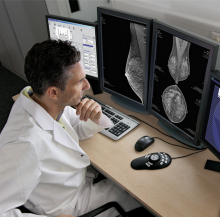Although targeted therapies have produced dramatic advances in the ability to control some types of advanced lung cancer, growth of the disease in the brain remains a major problem. Radiation is often used to treat deposits in the brain, but the best technique to deliver radiation can be controversial. Whole-brain radiation therapy, as its name suggest, treats the entire brain but can be associated with notable cognitive side effects. Another strategy, radiosurgery, directs highly-focused radiation only to the sites of metastasis, largely sparing the normal brain.
© Copyright Wainscot Media. All Rights Reserved.
Subscribe Now

